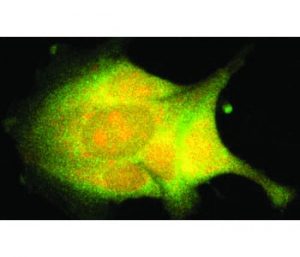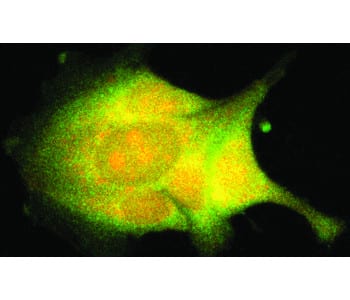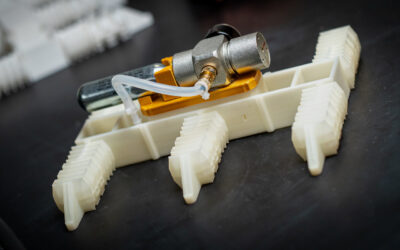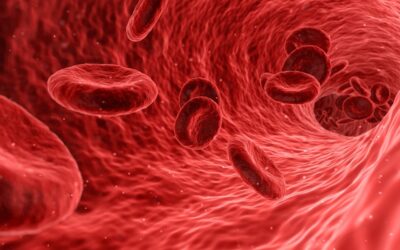 Multifunctional nanoparticles that actively target specific tissues or cells are promising new tools for cancer diagnosis and treatment. Magnetically and optically active nanoparticles are of particular interest because they not only enable multiple imaging modalities, such as magnetic resonance and near-infrared imaging, but also permit physically-modulated therapies, such as the magnetic hyperthermia therapy.
Multifunctional nanoparticles that actively target specific tissues or cells are promising new tools for cancer diagnosis and treatment. Magnetically and optically active nanoparticles are of particular interest because they not only enable multiple imaging modalities, such as magnetic resonance and near-infrared imaging, but also permit physically-modulated therapies, such as the magnetic hyperthermia therapy.
Researchers at University College Dublin describe composite nanorods that consist of long iron segments and short gold tips which can be functionalized with biomolecules of interest. Using a novel microfluidic flow assay, Kilinc et al. demonstrate the preferential targeting of breast cancer cell lines based on their receptor expression levels, and the subsequent activation of the ERK intracellular signaling pathway.
As a proof-of-context, cells were mechanically stimulated through periodic application of piconewton-level forces on nanorods using an electromagnet. Mechanical stimulation further increased ERK pathway activity, leading to cell death when combined with pharmaceuticals that also activate the same pathway. Although to a lesser extent, cell death was also achieved by exposing nanorod-targeted cells to alternating magnetic fields, possibly through localized heating of the receptor-bound nanorods.
Nanoscale targeting and localized mechanochemical treatment may lead to novel cancer therapies that may be complementary to current nanoparticle-based efforts, such as targeted drug delivery.

















